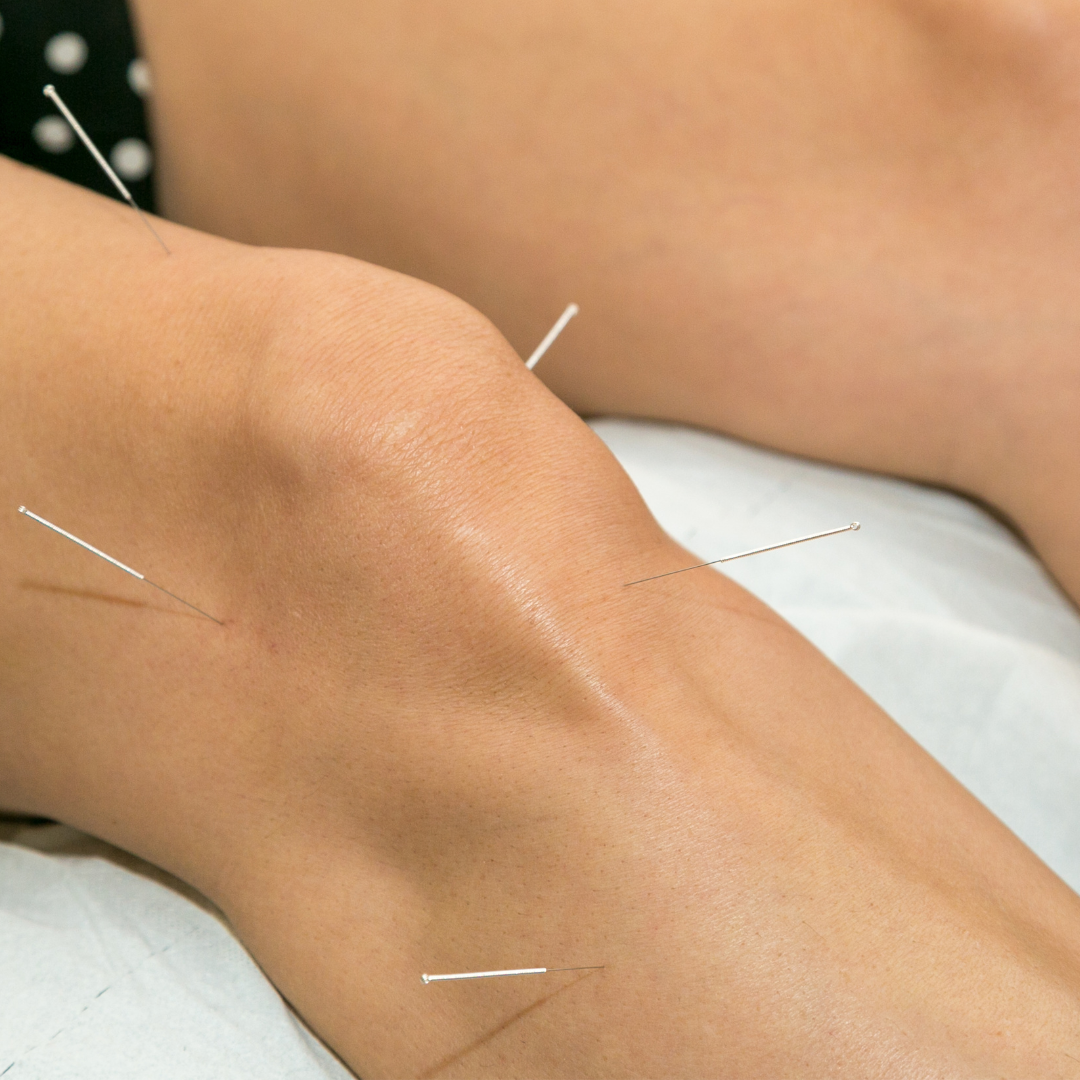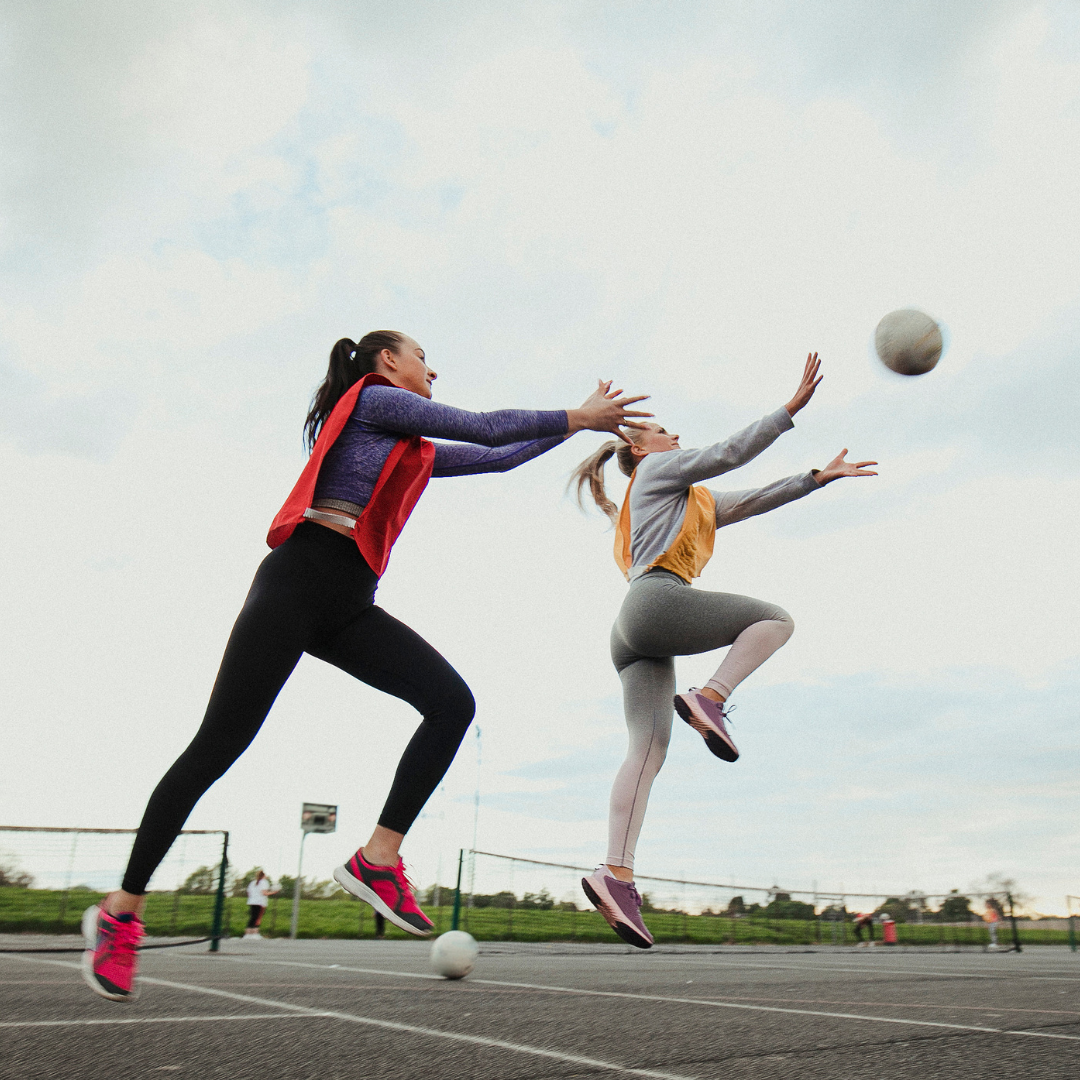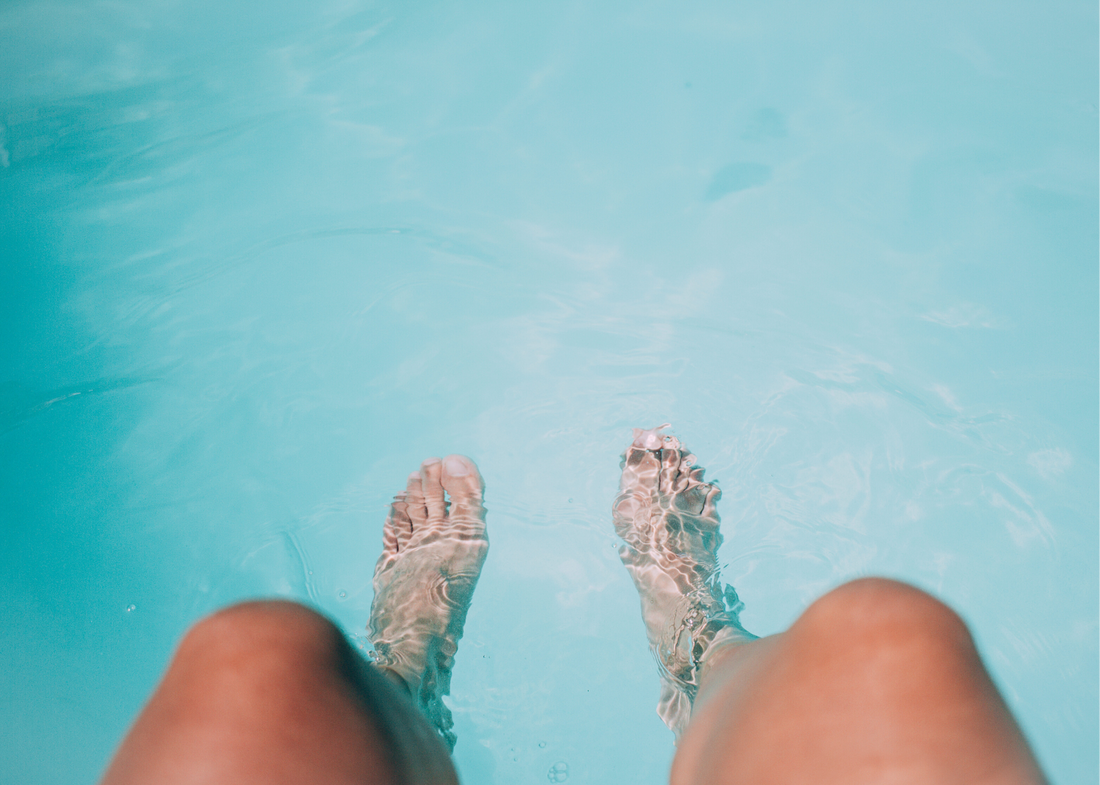|
By Ethan Farr, Sports Myotherapist & Exercise Scientist According to the Australian Institute of Health and Welfare an estimated 594,000 Australians over the age of 15 played netball throughout 2020–21. During this year there were 1,500 injury hospitalisations attributed to netball—1,380 female and 120 male. Just over half of these hospitalizations were due to soft tissue injuries and a little over a third were for fractures. According to Netball Australia “knees and ankles are the most commonly injured body parts for netballers” and they are most commonly injured during the landing phase when jumping or stopping. A few of the most common soft tissue injuries that occur within netball include: ankle sprains, shin splints, achilles tendinopathy, patella tendinopathy and ACL tears.
Now ankle sprains often dismissed as minor injuries, can prove far more nefarious than most believe. Beyond the immediate discomfort and inconvenience, untreated or improperly rehabilitated ankle sprains can lead to chronic instability, recurrent injuries, and even long-term joint damage not to mention decrease in sports performance and changes in walking and/or running mechanics increasing risk of many other injuries. The initial pain and swelling may subside, lulling individuals into a false sense of recovery, yet lurking beneath the surface are weakened ligaments and compromised proprioception, leaving the ankle vulnerable to further trauma. Myotherapy can play a crucial role in the treatment of ankle sprains by reducing pain and inflammation, improving blood circulation, and promoting tissue healing. Through targeted techniques, such as deep tissue massage and lymphatic drainage, we can help restore mobility, flexibility, and function to the injured ankle, facilitating a speedier and more complete recovery. Patellar tendinopathies and ACL tears are some of the other more common and more sinister injuries that occur in netballers. These injuries can decrease general stability around the knee and cause a lot of pain in all movements of the knee. Patellar tendonitis or “Jumper’s knee” is an inflammation of the patella tendon or the tendon just below the knee cap, it is an overuse injury caused by running or jumping especially on hard surfaces much like a netball court. It is associated with pain around the knee cap that gets worse with activity such as walking, running or jumping, and it can get worse with walking up stairs or uphill. Massage can help through improving circulation improving the healing process and by reducing tightness of muscles around or connecting to the patellar tendon reducing the pulling on the tendon. ACL tears are an injury I’m sure most have heard of but you may not know what it actually entails, The ACL or the anterior cruciate ligament is one of 4 ligaments in the knee holding and supporting the femur (thighbone), tibia (shin bone) and the patella (kneecap) creating stability in knee movements. The ACL runs diagonally in the middle of the knee. It prevents the tibia from sliding out in front of the femur and provides rotational stability within the knee (if you would like to know more on this check in with some of our other blogs). Tears of the ACL are graded on a severity scale being graded 1-3: Grade 1: The injury stretched your ACL enough to damage it, but it’s still in one piece and holding your knee bones together. Grade 2: The injury stretched your ACL so much that it was partially torn and loosened. Grade 3: A complete tear through your ACL meaning the ACL is now in two pieces. So how can treatment help with ACL tears, in cases where surgery was required massage can help control swelling and improve circulation around the site as well as reduce tightness of muscles around the knee reducing perceived pain on your rehabilitation pathway for lower graded sprains and tears of the ACL massage can help reduce some guarding around the knees that can reduce mobility and cause pain but through the use of some exercise prescription we can help strengthen the muscles around the knee to improve stability and reduce risk of further injury of the ACL. Should netballers be receiving myotherapy? Absolutely! Prevention and "prehab" of injuries is a much better option then getting seriously injured in sport! Netballers, it's time to prioritise your well-being on and off the court. Don't let injuries sideline your passion for the game. Whether you're a seasoned player or just starting out, understanding the risks and knowing how to address them is key to staying in top form. Don't wait until it's too late. Invest in your health, invest in your game. Schedule a treatment with me on a Tuesday, Thursday or Sunday so I can help assess and plan a course of treatment for your knee issues, so you can keep playing strong. Your body will thank you for it! Knee injuries are common among athletes, active individuals, and even those who lead a sedentary lifestyle. These injuries can range from mild sprains to severe tears, and can cause significant pain, swelling, and discomfort. In this blog, we'll explore the ways in which Myotherapy and specific dry needling techniques can help treat knee injuries and reduce pain. Myotherapists have a wide variety of treatment techniques and tools that help relieve knee pain.
Massage therapy is an effective way to treat knee injuries because it helps to improve circulation and reduce swelling. When you receive a massage, the therapist uses various techniques to manipulate the muscles and tissues surrounding the knee. This increased blood flow helps to reduce inflammation and speed up the healing process. Furthermore, massage therapy can help to break down scar tissue, which can cause pain and limit range of motion. By breaking down this tissue, massage therapy can help to improve flexibility and prevent future injuries. Our myotherapists consider all the surrounding muscles of the knee, as well as investigating other nearby areas like ankle and hip pain and mobility, and the strength of your glutes and lower back. In addition to reducing pain, massage therapy can also help to improve range of motion in the knee. Tight muscles can limit your ability to move your knee freely, which can cause pain and discomfort. Massage therapy helps to release tension in these muscles, which can improve mobility and reduce pain. Another treatment option our myotherapists are highly skilled in using for knee injuries is dry needling. Dry needling is a form of therapy that involves the insertion of fine, sterile needles into the muscles. This process helps to stimulate the healing process and reduce pain by releasing tension in the muscles. Dry needling can be especially effective for knee injuries because it helps to improve circulation, reduce inflammation, and break down scar tissue. Additionally, dry needling can help to release endorphins, which are the body's natural painkillers. This can help to reduce pain and improve overall well-being. Another benefit of dry needling is that it can help to improve strength and stability in the knee joint. When you receive dry needling, the therapist targets specific points in the muscles that are causing pain and discomfort. By improving the strength and stability of these muscles, dry needling can help to reduce the risk of future knee injuries. Furthermore, dry needling can help to improve range of motion, which is important for reducing pain and promoting healing. Studies have demonstrated dry needling to be an effective and safe treatment option for knee osteoarthritis. By targeting specific locations around the knee, dry needling can effectively aid in reducing pain sensitivity and allow for more freedom of movement. Electrostimulation of the needles has also been shown to have a beneficial effect on cartilage regeneration, and in reducing the need for medications. We know that knee injuries can be painful and debilitating, but massage therapy and dry needling can help to reduce pain and improve mobility. Whether you're recovering from a knee injury or dealing with chronic knee pain from conditions like osteoarthritis, these therapies can help to improve your overall well-being. By combining massage therapy and dry needling, you can help to reduce pain, improve circulation, and promote healing. So, if you're suffering from knee pain, our team is here to help. Book your first appointment to get your treatment plan started today. With regular therapy, you can help to reduce pain, improve mobility, and enjoy a more active and pain-free life. The meniscus is a C-shaped piece of cartilage that acts as a cushion between the bones in your knee joint. It helps to absorb shock and provide stability to the knee, and is crucial for normal movement and function. Unfortunately, meniscus injuries are common, and can be caused by a variety of factors, including aging, overuse, and traumatic events. In this article, we'll discuss the causes and symptoms of meniscus injuries, and the exercises that can help with recovery. Meniscus injuries can be caused by quick, shearing movements of the knee, including twisting or overloading the knee joint. They are especially common in athletes and active individuals, but can occur in anyone at any age. Sports where players need to quickly change direction, like basketball and netball, often see athletes struggle with meniscus injuries.
Some of the most common symptoms of a meniscus injury include knee pain, swelling, and a locking or clicking sensation in the knee. In some cases, you may also experience a loss of range of motion or difficulty walking. Once you've been diagnosed with a meniscus injury, you should book with your local Myotherapist for a treatment plan to guide you through your recovery. However, there are several basic exercises that can help with recovery, and these can generally be safely done by most people. These exercises can help to improve strength, stability, and flexibility in the knee, and can also reduce pain and swelling. Some of the most simple but effective exercises for meniscus injuries include:
Knee and meniscus injuries can be painful and debilitating, but with proper rehabilitation, you can make a full recovery. Our therapists can help with a personalised rehabilitation program to help you to reduce pain, improve strength, and restore mobility in your knee. It's important to remember that recovery times can vary depending on the severity of the injury, so it's best to consult with a Myotherapist or doctor before beginning any exercise program if your knee pain is moderate to severe. With proper care and attention, you can make a full recovery from a meniscus injury and return to your normal activities, and we're here to help. Book your consultation with us today. If you have joint pain, chances are that hydrotherapy is going to be a huge help to you. A hydrotherapy pool is a warm water pool for doing exercises. Its quite different from swimming laps, although a lot of people find that swimming can be helpful too, if its not painful to do it. Can’t swim? It doesn’t matter, a hydrotherapy pool is usually quite shallow, it usually doesn’t have a “deep end” where you can’t touch the bottom. Our local hydrotherapy pool is at Knox Leisureworks in Boronia. The centre has a lot to offer, actually. There is the hydrotherapy pool, as well as a kids pool, a regular lap pool, a spa and sauna, and an onsite gym. So why is Hydrotherapy such a great option?
Buoyancy – Being in the water takes the pressure off the joint due to the water supporting your body weight. This makes it a great option for weight bearing joints like hips, knees and ankles, especially following injuries or surgeries like hip and knee replacements or fractured bones. Warmth – Heated hydrotherapy pools allow muscles to stay warm and relaxed while exercising. Typically a hydrotherapy pool is heated to about 33*, warmer than a normal swimming pool. Low Impact – Unlike running, doing exercises in water is friendly on vulnerable joints. The water doesn’t allow you to move as fast as in air, so the force of impact is less than running or jogging on a hard surface. Resistance – The water provides great resistance for strengthening the body, without feeling painful. It can be tiring afterwards due to the resistance of the water, though, so starting with short sessions is best. Low Cost – Knox Leisureworks has a great hydrotherapy pool. You can access the hydro pool with your standard pool entry fee of around $8, or if you plan to go frequently they have multi visit passes or memberships. What kinds of pains or conditions does it work well for? Hydrotherapy is fantastic for helping with pain in big joints and weight bearing joints, like hips, knees and ankles. Lower back pain can respond very well to hydrotherapy because of the way the water helps take pressure off the spine and support the weight of the body while you move. It can also be great for things like arthritis, and rehabilitation after a fracture or surgical repair. It can be great for general fitness, too! How do you get started? Initially just walking through the water can be really helpful. You can also include day to day movements like bending and straightening your knee or hip while standing with you back against the pool wall for support. You can use a floating board or pool noodle to hold onto and do gentle squats or lunges. If you’re uncertain, talk to us about specific pool exercises at your next appointment and we can help create a program tailored for you. |
Meet Our Team
We have a team of great practitioners available 7 days a week at our Rowville clinic. Archives
July 2024
Categories
All
|
Got a question about Myotherapy?
Contact Mel by phone, email or Facebook
|
Simple Wellness Myotherapy & Remedial Massage Clinic
Shop 12B 150 Kelletts Rd Rowville VIC 3178 |
Phone us on
03 8204 0970 |





 RSS Feed
RSS Feed